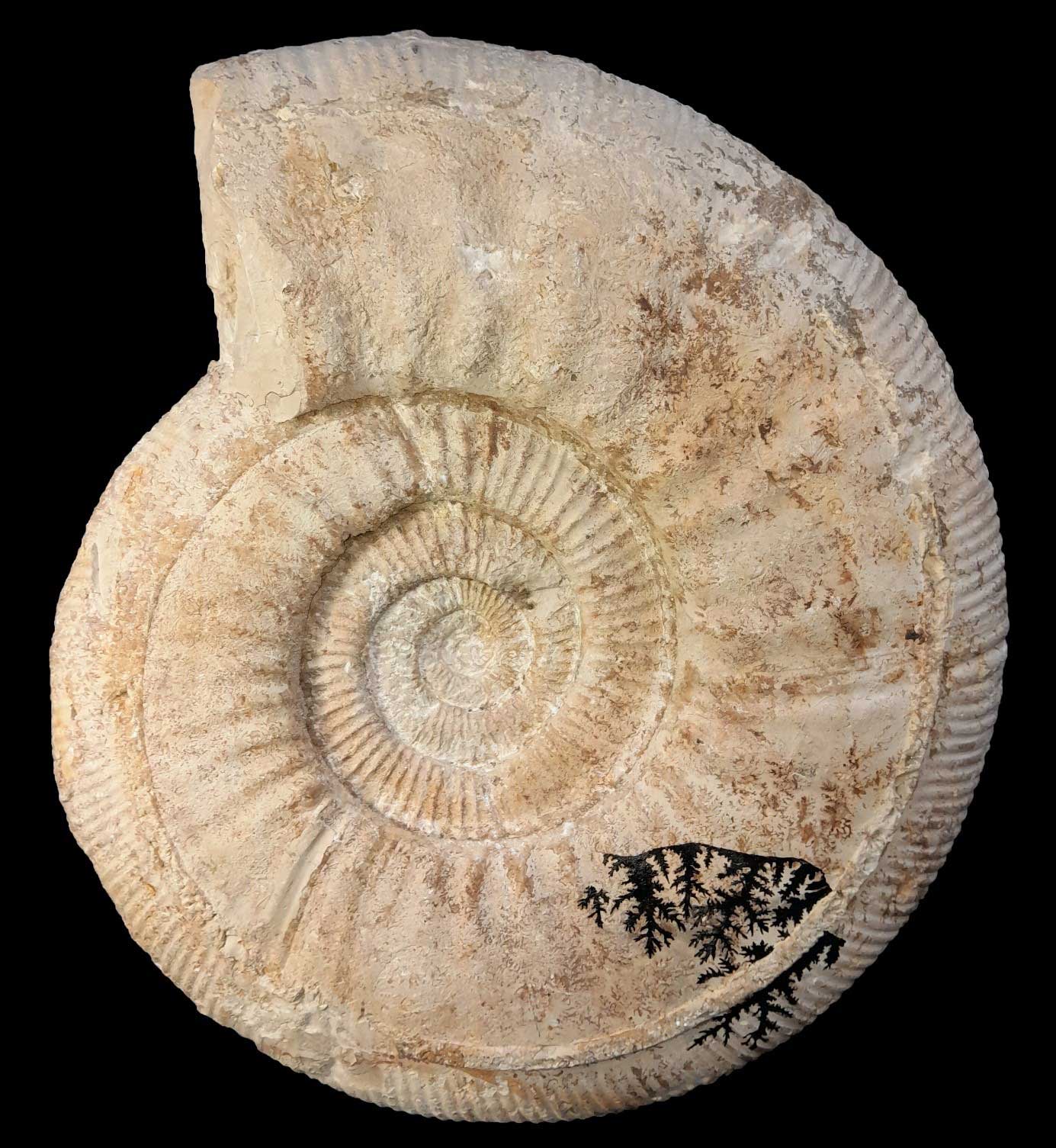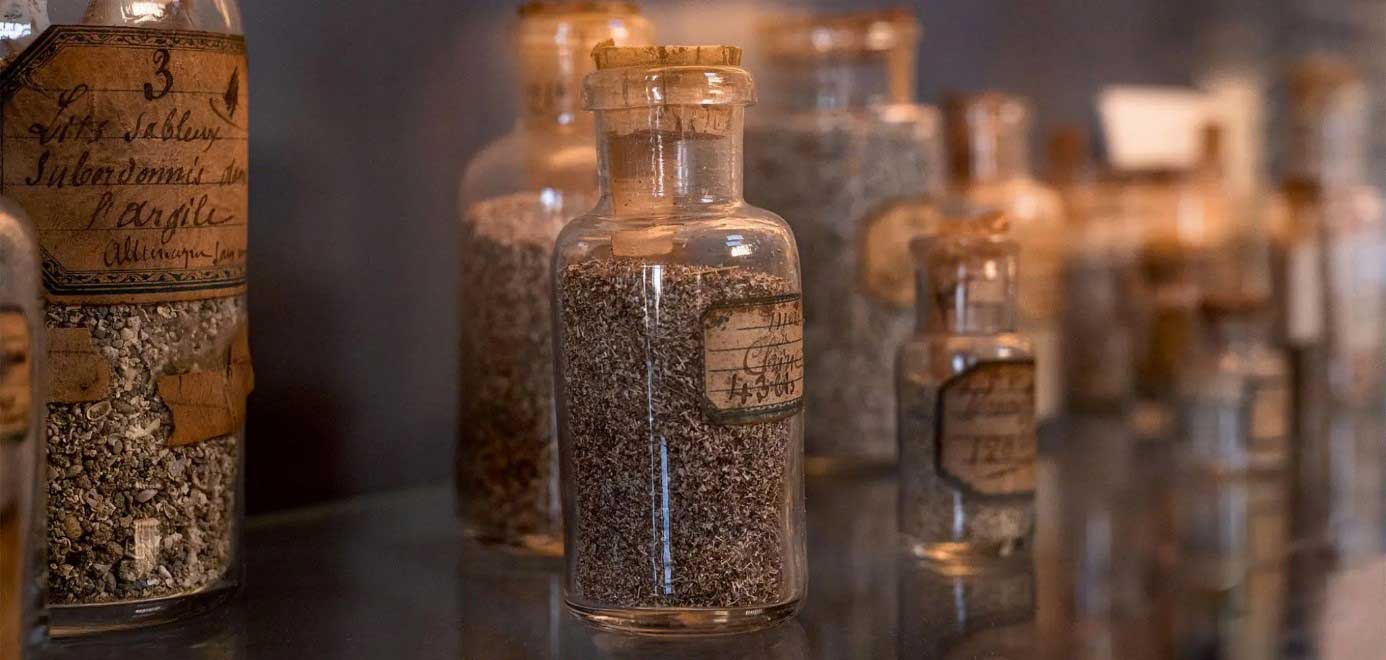
At the origin of biostratigraphy: ammonite Lithacosphinctes achilles (d’Orbigny, 1850) from the Late Jurassic (Oxfordian) of Aytré, Charente-Maritime, France.
Specimen MNHN.F.A08240, diameter: 30 cm – © Sylvain Charbonnier (MNHN, CR2P).
Housing institution
Muséum national d’Histoire naturelle, Paris
Location
Address 57 rue Cuvier 75005 Paris
48° 50′ 32″ N, 2° 21′ 23″ E
Homepage
At the origin of biostratigraphy: ammonite Lithacosphinctes achilles (d’Orbigny, 1850) from the Late Jurassic (Oxfordian) of Aytré, Charente-Maritime, France.
Specimen MNHN.F.A08240, diameter: 30 cm – © Sylvain Charbonnier (MNHN, CR2P).
The d’Orbigny Collection: 100,000 fossils at the origin of biostratigraphy, stratotypes and micropalaeontology.
- Geo-collection description
Alcide d’Orbigny’s palaeontological collection is housed at the French National Museum of Natural History since 1858. It gathers more than 100,000 specimens, and was one of the most important palaeontological collections in the world in the middle of the 19th century (De La Bèche, 1847). Many of these specimens are the types of almost 3,000 fossil species – mainly invertebrates and microfossils – described by d’Orbigny himself (e.g., d’Orbigny, A., 1840–1860). First professor of Palaeontology at the Paris Museum, Alcide d’Orbigny is the father of two major disciplines in geosciences: biostratigraphy and micropalaeontology. He defined numerous geological stages that are still used today as chronostratigraphic world references such as Toarcian, Callovian, Oxfordian, Kimmeridgian, Aptian, Albian and Cenomanian. His pioneering biostratigraphical comparisons led to the definition of the stratotypes. His interest in microscopic creatures that he named “foraminiferans” led Alcide d’Orbigny to found a new specific discipline named “micropalaeontology”, with a major legacy in current science through the multiple implications of his work in academic research (palaeoceanographic and palaeoclimatic studies) and the economic sector (research of gas and oil deposits). A special section in his collection is dedicated to microfossils: the Sables d’Orbigny (d’Orbigny Sands) which correspond to about 800 glass bottles filled with sediment containing microfossils from around the world (Hairie et al. 2022).
- Geo-collection value
In 1822, the word “palaeontology” was invented at the Paris Museum in France. Thirty years later, the chair of palaeontology was created for Alcide d’Orbigny. During his short career, he gathered what was likely the largest collection of his time. D’Orbigny’s contribution to palaeontology was at the crossroads between catastrophism, transformism and darwinism, being contemporaneous to Cuvier, Lamarck and Darwin. At the golden age of scientific exploration of the world, d’Orbigny forged his personality and science being an explorer and traveler for the Paris Museum (Heron-Allen 1917). Not only did d’Orbigny create entire disciplines, define geological stages, describe thousands of species, but also understood that this science had to be advertised outside the scientific community. He himself carved magnified models of his microscopic creatures, foraminiferans, which he sent to institutions and colleagues worldwide: they are still shown and used for teaching. The exceptional d’Orbigny’s collection, well known from the scientific world, is exhibited to the public since the opening of the Gallery of Palaeontology in 1898 and was recently digitized. The scientific legacy of his collection is vivid: most of the fossil species he defined are still valid and scientists from the entire world yearly visit and study the whole d’Orbigny’s collection.
- Reference
The d’Orbigny’s collection is protected to the highest level in France thanks to its patrimonial status. We nonetheless expect that being listed as an IUGS Geo-Collection would highlight this crucial collection among the 7 millions of fossils stored in the Paris Museum. The palaeontological collections in Paris are indeed well known from the vertebrate community and from the public (mammals, reptiles, dinosaurs, fish) but invertebrates, microfossils and palaeobotany are traditionally less recognized. Being an IUGS Geo-collection would also allow the d’Orbigny’s collection to be more widely known from the public and used for teaching, from schools to universities. It may lead to historians being re-interested in the evolution of d’Orbigny’s scientific ideas rather than only his famous travel to South America. The scientific contribution of d’Orbigny, his historical importance are poorly known from the public, contrary to contemporaries such as Darwin. Having his collection listed as an IUGS Geo-Collection would give d’Orbigny the recognition he deserves.

